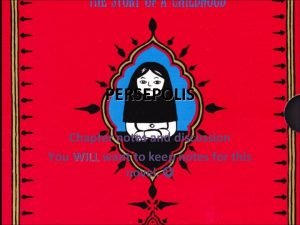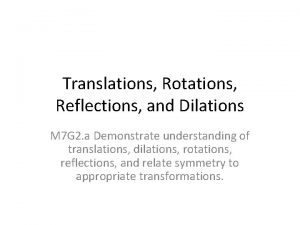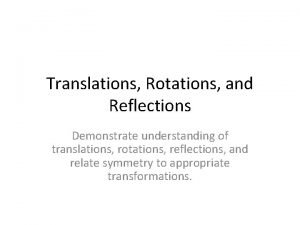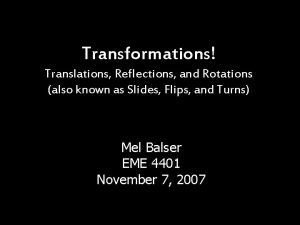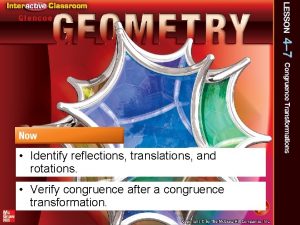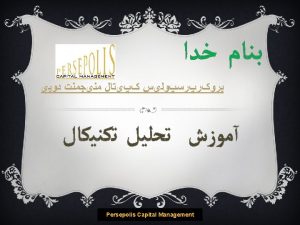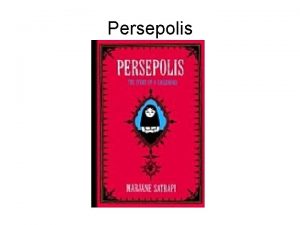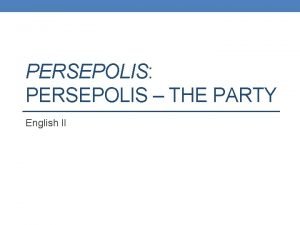Persepolis Essential Questions and Reflections Essential Questions How







- Slides: 7

Persepolis Essential Questions and Reflections

Essential Questions How can the individual embrace hopes and overcome fears to foster change? Which is more powerful in self-discovery: hope or fear? How do writers express their hopes and fears in such a way that their experiences are relevant to subsequent generations?

Other Questions to Consider How do we form our beliefs in life? Are they set in stone, or constantly changing? What does it take to go from being a child to an adult? How does a person survive in and make sense of a conflicted world? In what ways must you change, and in what ways can you stay the same?

What news stories or photographs or political figures have shaped your impressions of Iran as a nation and/or of Iranian citizens? How is America and American culture represented in the book? According to Satrapi, what are some of the consequences on Iranian society of long years of warfare and violence?

What difference does it make to your reading that this book is a memoir, a rendering of Marjane Satrapi’s own life, rather than a fictional story about life in Iran? Who are the heroes of Satrapi’s story? And what makes them heroic? How do Marjane’s ideas about heroism change in the course of the narrative? Why does Satrapi call her book Persepolis instead of something like “Growing Up in Iran”?

What forms does teenage rebellion take among Marjane and her friends? To what extent are they like teenagers everywhere? How are they different? Why do you think Satrapi chose to tell her story in words and images? What does the combination make possible that words or images alone would not? Satrapi’s drawings are stark black and white, but how black and white is the world that her drawings depict? To what extent does Satrapi manage to convey complex experience in such simple, even childlike, drawings?

What traditional novels that you’ve read do you think might be better in this graphic format? Why?

